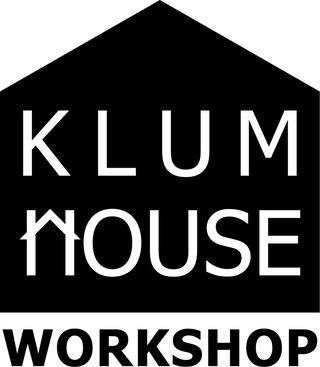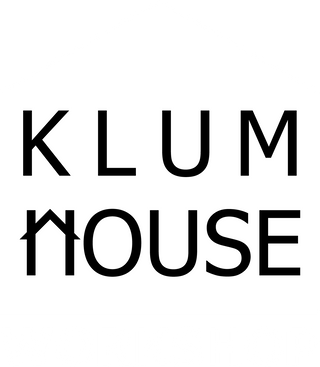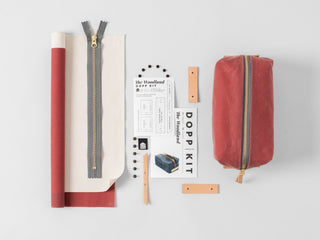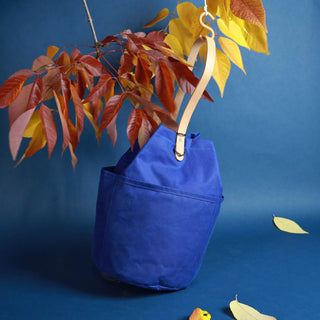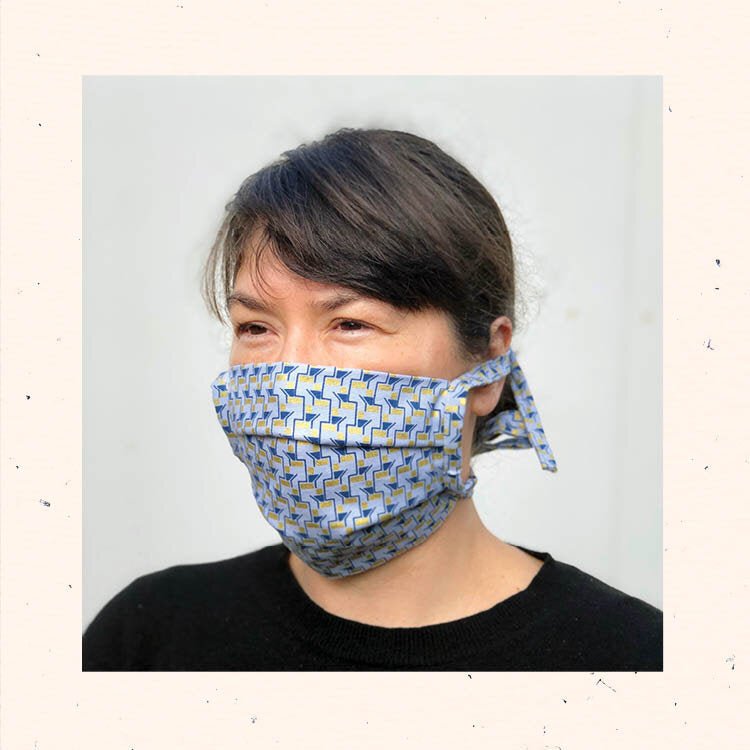UPDATED FRIDAY, 3/27:
We are so excited to see many of your faces at our virtual mask making party this afternoon. Just a reminder that the gathering begins at 4:30pm PST and will wrap up around 5:30pm. If you have not yet RSVP'd, you can do so at the link below. You'll receive an email later today with a link to join us on Zoom.
Please note that while Ellie does have some sewing demos planned, this event will be less formal workshop and more of a social sew for mask makers to connect, share resources, and feel a sense of solidarity with other across the country. You'll be able to see the other participants and ask questions of Ellie and each other in the Zoom chat.
We are expecting a large group (which is amazing!), but this is also our first time hosting a virtual event of this size, so we appreciate your patience if we run into any technical hiccups! We are so heartened and inspired by the collective mask sewing effort taking place in our country right now and hope that this event will leave you feeling informed and empowered to get involved. Here are some tips for preparing:
1. Download Zoom
If you haven't already downloaded Zoom to your computer, we recommend doing so in advance of our gathering so you can log right in when we begin!
2. Choose a Mask Pattern
There are lots of mask patterns on the internet right now, and we know that choosing the best one can feel pretty overwhelming. First and foremost, we recommend linking up with an established mask-making effort in your area that is taking instructions directly from local healthcare workers. In Portland, the Crafters Against Covid-19 Facebook group is doing a great job of this. For those who live elsewhere, Get Us PPE is the largest nationwide database for connecting folks who are making/donating masks to folks in need.
That said, given that the need for masks is dire, we don't have time to waste in pattern paralysis! When in doubt, just choose a reputable pattern that you have the correct materials for and get going! Today, Ellie will be demonstrating how to make two masks—one with elastic, based on a pattern from Deaconess Hospital, and one with fabric straps, which is an adaptation of a pattern from Providence Hospital's 100 Million Mask Challenge. There are also some great mask making videos on Bluprint, and our friends over at Fancy Tiger Crafts have done a great job of rounding up patterns and resources on their blog as well. Spend some time doing your research and then pick one and get making!
3. Prep Your Workspace + Materials
Clear a workspace in your home that is free of food, smoke, pets, and kids. Launder the fabric you intend to use, ideally with unscented detergent. Before starting, wash your hands, and do not touch your face as you work. Sample masks that you try on yourself should not be donated. Only those who are experience stitchers and in good health should make masks.
4. Gather + Prep Materials
Once you choose your mask pattern, gather your materials. You may want to pre-cut your fabric so you are ready to follow along with tonight's demo. Otherwise, you can totally tune in to simply gather information and get your bearings, so you're ready to hit the ground running this weekend!
Looking forward to seeing you later!!
UPDATED WEDNESDAY, 3/25:

Hi friends,
This Friday, March 27 from 4:30–5:30pm PST, we’re going to be hosting a virtual Mask Making Party and you’re invited! Whether you’re already a full blown mask-making machine or curious about how to get started, we’ll be able to ask questions and share mask-making tips and tricks. Ellie will be answering questions and doing some sewing demos, but this virtual get together will be less formal workshop and more of a social sew for mask makers across the country to connect, exchange resources, and feel a sense of solidarity. On the event listing, you'll find information on suggested patterns + materials, where to donate masks, sanitary measures, and more.
This will be a free virtual gathering, and anyone is welcome to join. RSVP below and you’ll receive an email on Friday with a link to join us on Zoom. We can’t wait to see your faces!
A NOTE ON MASK PATTERNS:
There are a many good, free mask patterns and tutorials on the internet right now. We’ve done some research, made some samples, and narrowed our favorites down to two—one with elastic and one with fabric ties. We’ve included links to both pattern below, along with Ellie’s suggested modifications, but please note that there is not one perfect mask pattern. Different healthcare workers and facilities are often looking for particular things, so your best bet is to connect directly with healthcare workers in your area and find out what they need.

MASK PATTERN WITH ELASTIC
Our favorite mask pattern with elastic ear loops comes from Deaconess Hospital. You can download instructions here, and there is also YouTube video tutorial. Based on suggestions from friends in the healthcare industry, we suggest making the following modifications:
-
To fit a larger variety of face sizes, add 1/2” to the height, resulting in pattern pieces that are 6.5” x 9”
-
The pattern calls for 1/4" elastic cut to 7" lengths, but that results in ear loops that are too big for smaller faces. Switching to 1/8" elastic results in loops that you are able to knot easily to make the loops smaller, making the mask more adjustable. (Thanks to Stephanie Syjuco for this suggestion!)
-
My friend and surfing partner, who’s an oncology nurse at OHSU, suggests adding a metal nose bridge to the mask, which is especially helpful for keeping healthcare workers’ glasses from fogging up. You can do this by straightening a paper clip and encapsulating it with duct tape before sewing it into the mask. My friend Heather Treadway has a great tutorial for this in her Instagram highlights!
MASK PATTERN WITH FABRIC TIES
If you don’t have access to elastic, our favorite mask pattern with fabric ties comes from Portland’s Providence Hospital and is the pattern that was included in their 100 Million Mask Challenge kits. Because the original pattern uses medical fabric that does not fray and I used 100% cotton that does, I’ve come up with a different way of attaching the straps (drawing from a technique we use to bind the interior hanging pocket on the Oberlin Tote!)
Here is an instructional PDF with my annotations. (Apologies that this is rough!) I will do a demo at our virtual mask making party this Friday to show you how to adapt this pattern with fabric ties!
FROM WEDNESDAY, 3/20:
As I'm sure you are well aware, our country’s healthcare workers are facing a severe shortage of protective masks. As makers with sewing machines, free time, and a desperate desire to help, we've been keeping a close eye on local initiatives to step up and help fill this need in as efficient and medically informed a way as possible. For those, like us, who have the skills and desire to help, we've rounded up some of the best resources we've found locally (in or near Portland, Oregon) to get involved in collective mask making efforts. Please note that only those who are experienced stitchers and in good health should participate.
100 MILLION MASK CHALLENGE
First up, Portland's Providence Hospital has just launched an initiative called the 100 Million Masks Challenge where they are calling on "Anyone with a willing heart and the ability to sew can help us protect our caregivers by sewing masks they can wear on the front lines of the fight against COVID-19." They are beginning by supporting Western Washington, which is one of the hardest hit areas in the nation, with plans to expand outwards across the country in the coming days. Providence is organizing pick-ups of kits with the materials needed to sew 100 masks. There will be specific drop-off times and locations for finished masks, and people are advised NOT to try delivering masks to hospitals directly, as hospitals are already extremely overwhelmed. Follow the link below for further details and to sign up for the challenge. (Providence Portland is also accepting monetary donations to help support their Covid-19 response.)
CRAFTERS AGAINST COVID-19
Another amazing mask-making initiative that has sprung up in Portland in recent days is a Facebook group called Crafters Against Covid-19 PDX. This group is also following directives coming from healthcare professionals at Providence Portland. They've posted a mask sewing video tutorial, info about the most effective fabrics to use, supply shares, and a great video announcement from today. Be sure the read the post at the top of the Facebook group, as it gives an overview of their efforts, talks about who should and should not get involved, best practices for sanitary sewing, and will likely answer many of your questions.
For those outside of Portland, there are posts in this group that are beginning to connect stitchers from the Midwest and New England, as well. I imagine there will be more parts of the country represented in the coming days.
PORTLAND GARMENT FACTORY
This one is not a call for public action, but I just want to give a big shout out to the team over at the Portland Garment Factory who have been working around the clock to mobilize mask and gown production in their factory. As of today, they have produced 2,500 masks to distribute to local healthcare institutions and are gearing up to make many more. This makes us prouder than ever to live in city where creative women-run businesses and small batch manufacturing are doing such vital work. Klum House hopes to support their efforts in any way we can.
_________________________________________________________________________________________________________________
SAFETY + RESPONSIBILITY
As you know, we here at Klum House are bag makers, teachers, designers, and business women—not medical experts in any way, shape, or form. We are aware that there is a lot of conflicting advice on the internet right now about the best way to create medically-effective masks, as well as debate over whether DIY mask making is even a good idea. We are doing our best to keep up with the latest advice and only share resources that are reliable, legitimate, and based on directives coming straight from medical professionals and institutions.
Currently the CDC's website says: "In settings where face masks are not available, HCP might use homemade masks (e.g., bandana, scarf) for care of patients with COVID-19 as a last resort. However, homemade masks are not considered PPE, since their capability to protect HCP is unknown. Caution should be exercised when considering this option. Homemade masks should ideally be used in combination with a face shield that covers the entire front (that extends to the chin or below) and sides of the face."
Of course homemade masks are not the ideal. But in the near future, they may be healthcare professionals' only option. The best we can do is educate ourselves and link up with respected organizations, like Providence, that know more than us and let them lead the way. If you are not Portland-based, we encourage you to look for similar, professionally-approved efforts in your local community. We will do our best to share further tips and resources as we are made aware of them.
The Klum House crew will be mask making alongside you! We'll share our process and everything we learn about best practices, materials, etc. on Instagram in the days to come. Sending you all love, gratitude, and strength.
XO KH ♥️
